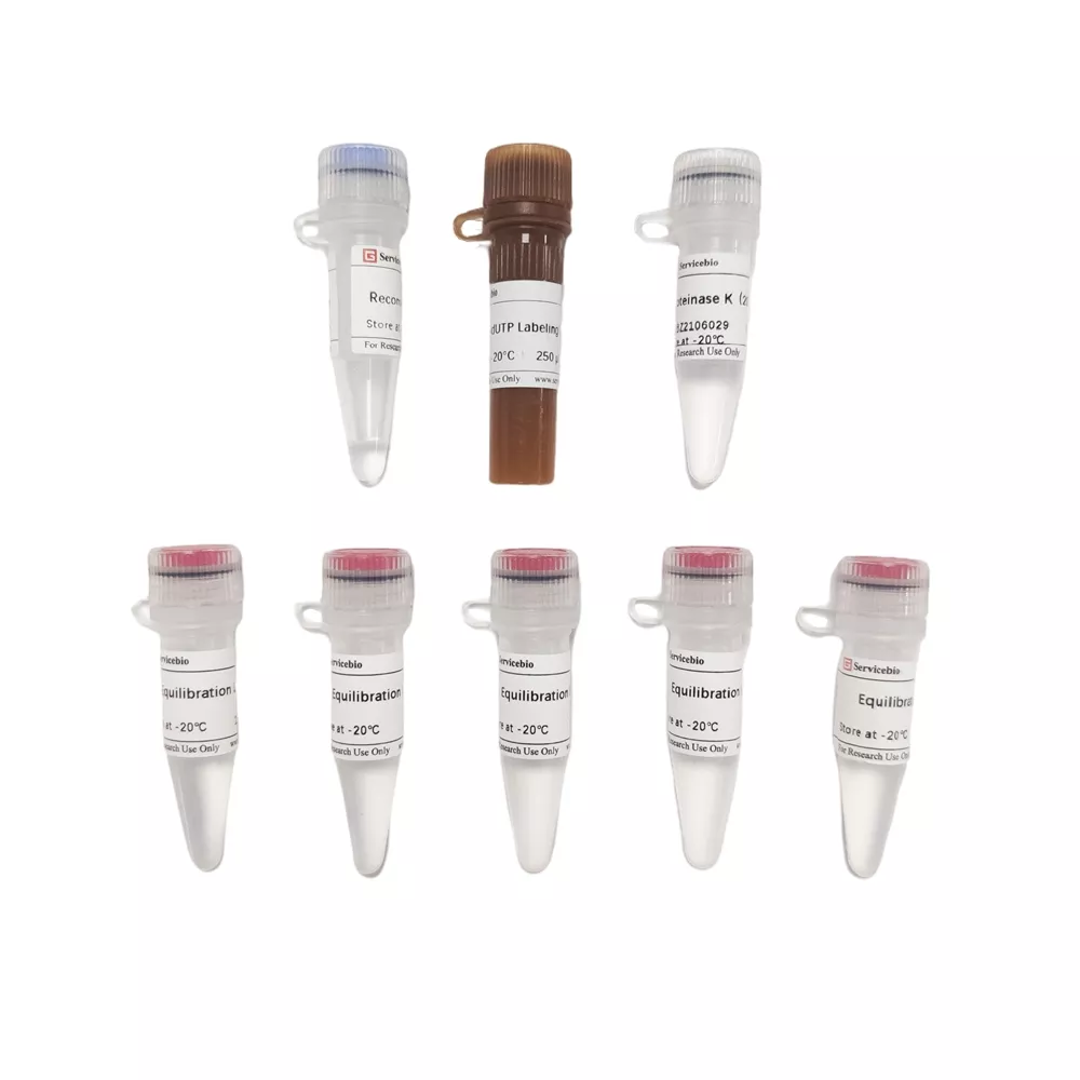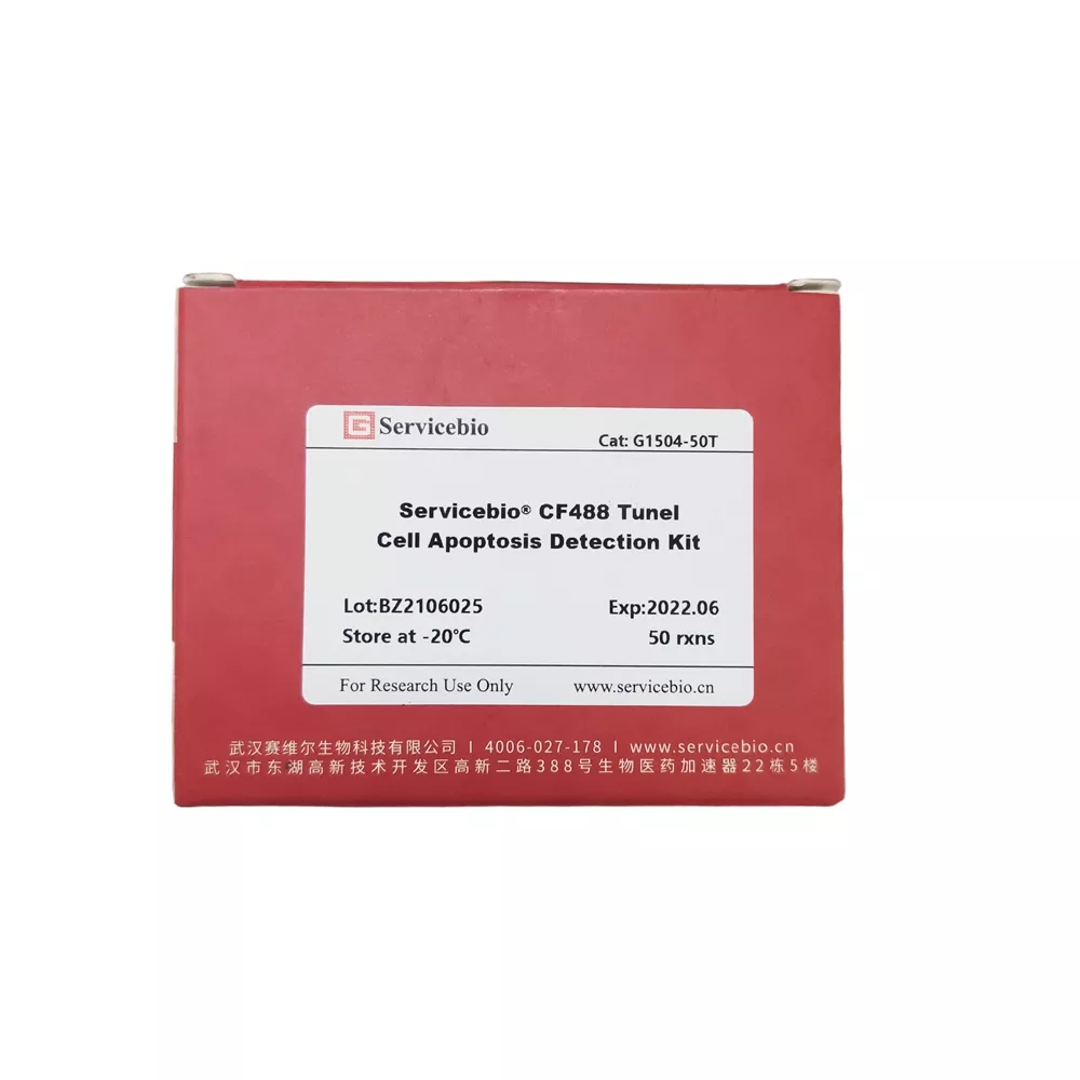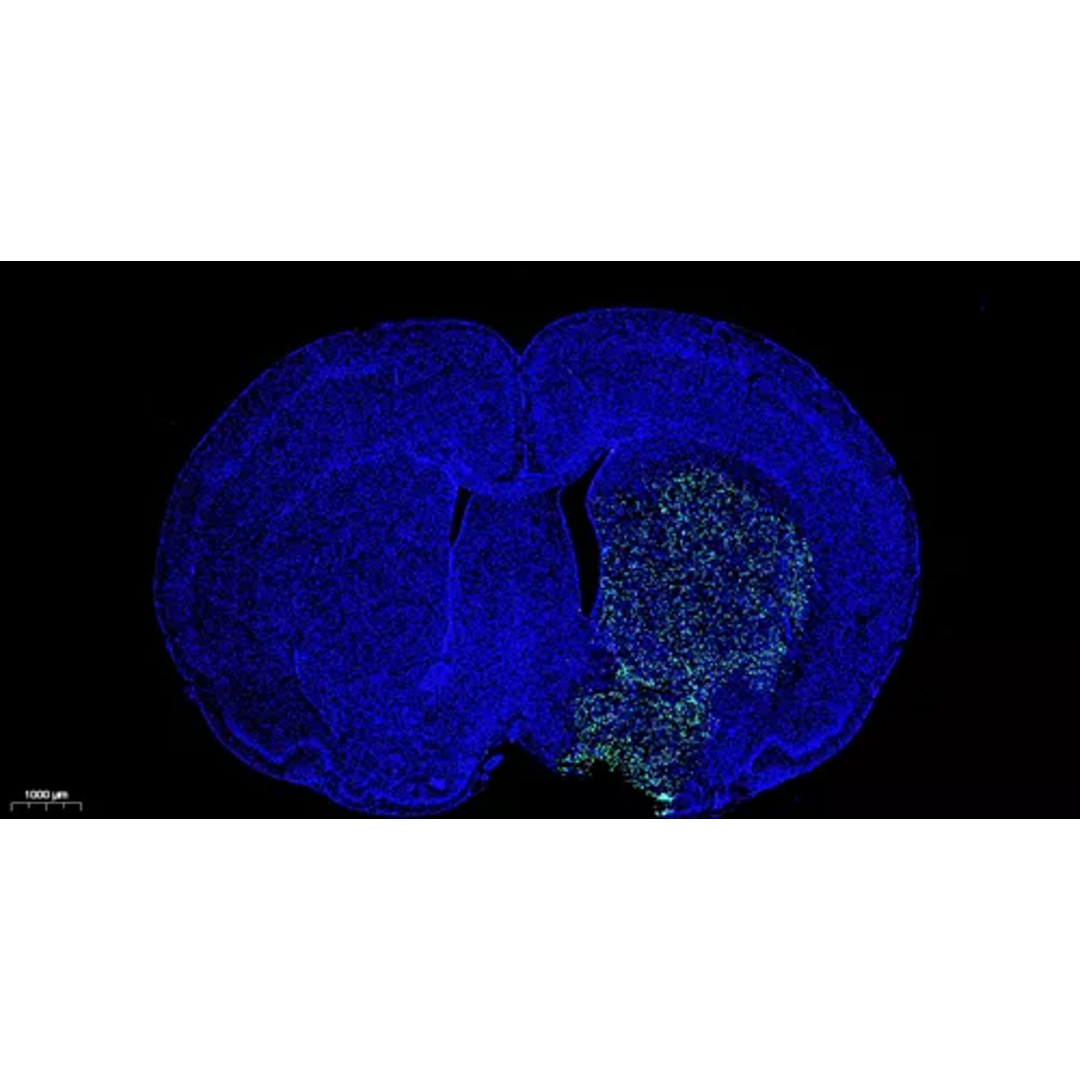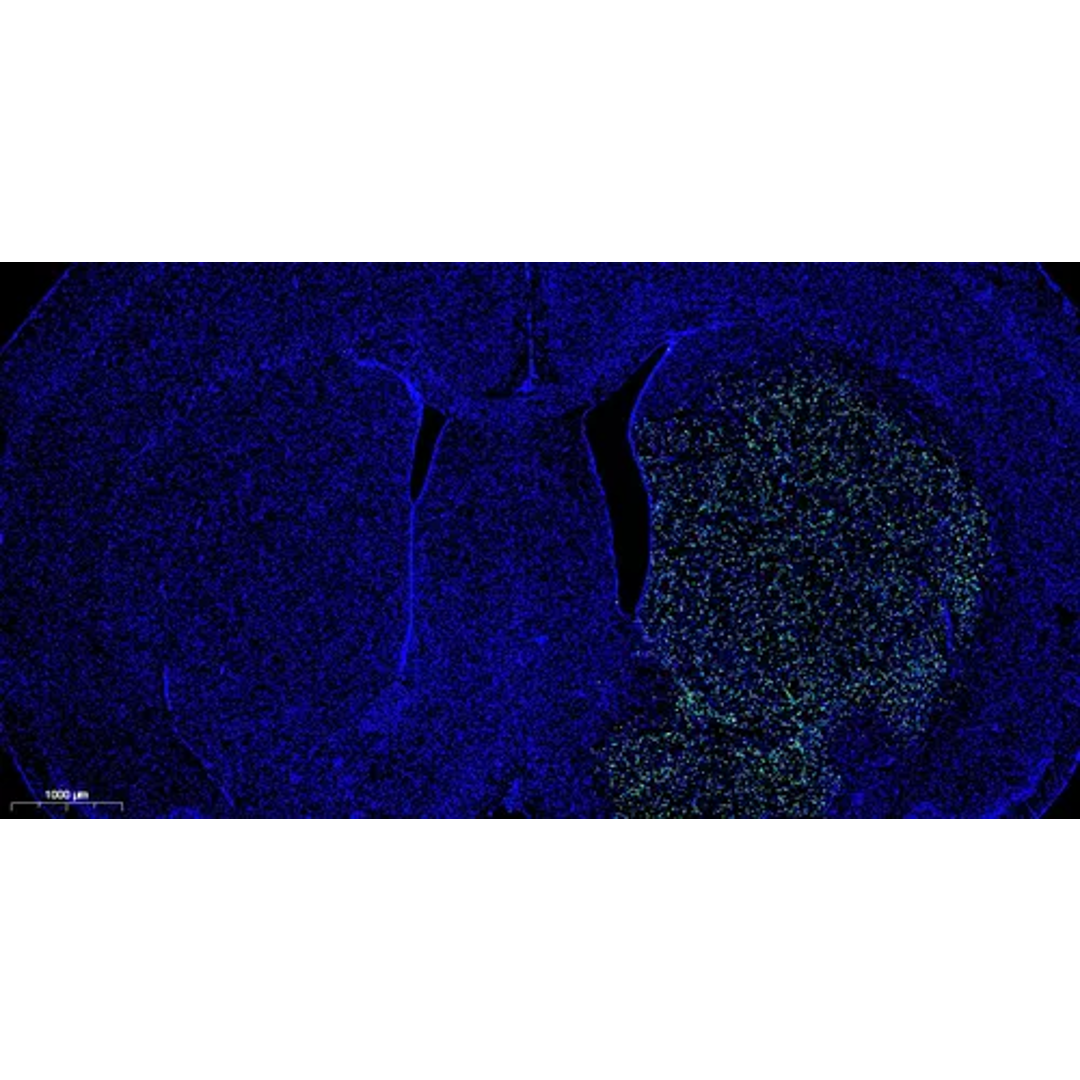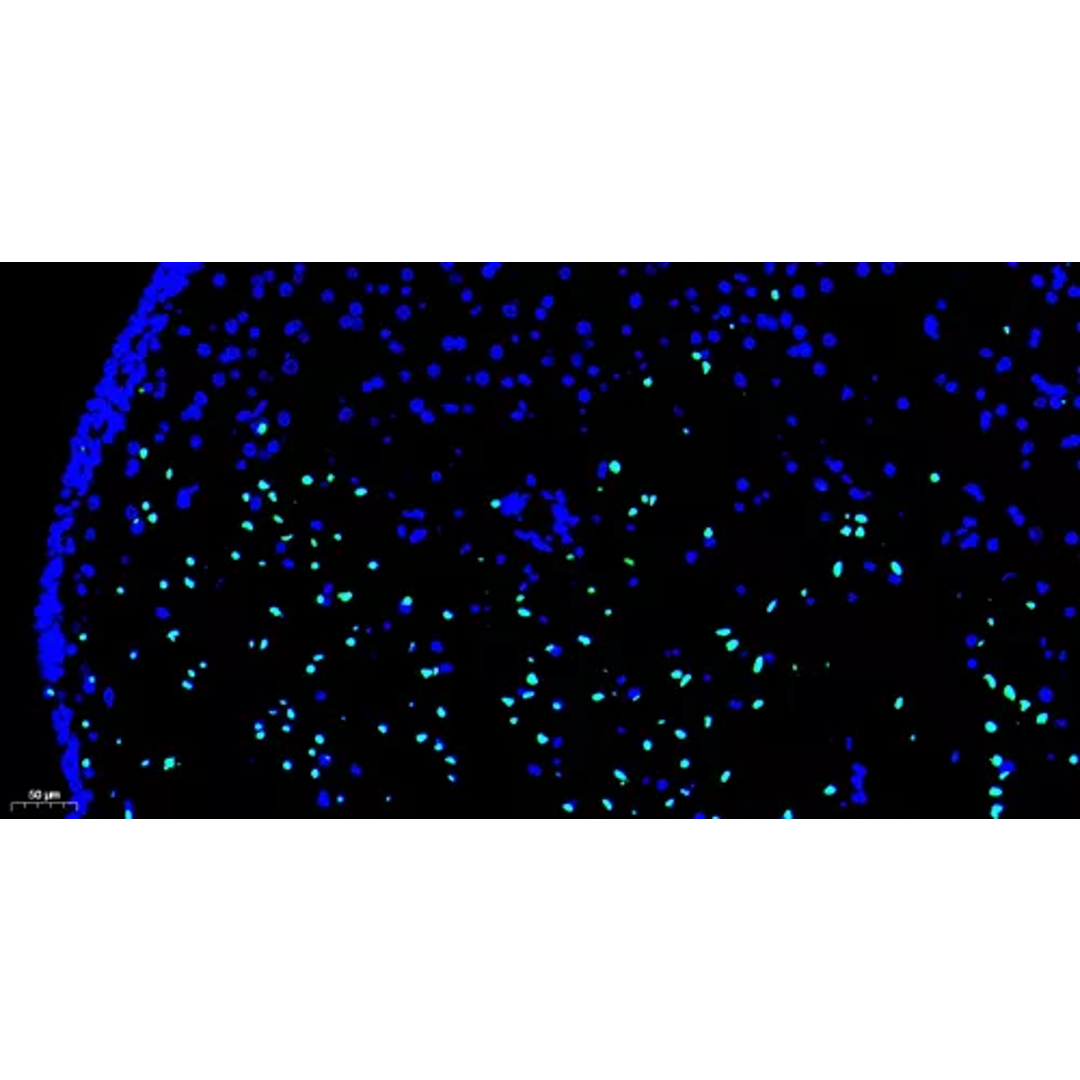- Products
- Consumables
- Equipment
- Reagent
- Culture Media
- Buffer
- Powder
- Molecular Assay
- Nucleic Acid Preservation & Remover
- Nucleic Acid Extraction
- Reverse Transcription
- PCR Amplification
- Nucleic Acid Electrophoresis
- Protein Assay
- Protein Extraction
- Gel Preparation
- Protein Electrophoresis
- Protein Transfer
- Antibody
- ECL Kit
- Cell Separation and Digestion
- Nucleus Fluorescence Detection
- Cell Apoptosis Detection
- Cell Proliferation Detection
- Pathological
- Fixative & Dewaxing Liquid
- Staining Solution
- Antigen-Retrieval Solution
- Immunohistochemistry Kit
- Immunofluorescence Staining Kit
- Mounting Media
- Monitoring Equipment
- Digital 3D Solutions
- Radiography & Imaging Systems
- Dental Units and Accessories
- Handpiece
- Scaling and Polishing
- Files and Burs
- Implants Surgery
- Endodontics
- Laser System
- Maintenance Disinfection
- General Dental Products
- Curing Light
- Distilled Water Machine
- Furniture and Designs
- Base Plate Wax
- Cotton roll dispensers
- Disposable Saliva Ejectors
- Micro Applicator
- Mixing Bowl and Spatula
- Bur holder box
- Dam Kit
- Safety Glasses
- Sectional Contoured Matrices Kit
- Disposable Dental Air Water Syringe Tips
- Denture Box
- Others
- Retractor
- Implant Tray
- Mobile Side Cabinet in Consulting Room
- Solutions
- Careers
- About Us
G1504-50T / 100T CF488 Tunel Cell Apoptosis Detection Kit TdT mediated dUTP Nick End Labeling
The breakage of chromosomal DNA in apoptosis is a gradual process. Chromosomal DNA is first degraded into large fragments of 50-300 kb under the action of endogenous nucleases, and then about 30% of chromosomal DNA is under the action of Ca2+ and Mg2+-dependent endonucleases. They are randomly cut to form 180-200 bp nucleosomal DNA polymer. Therefore, in the late stage of apoptosis, DNA will be degraded into 180-200 bp fragments, and a large number of 3'-OH ends will be exposed on the broken genomic DNA. Terminal Deoxynucleotidyl Transferase (TdT) is a template-independent DNA polymerase that can catalyze the binding of deoxynucleotides to the 3'-OH ends of broken DNA molecules. Therefore, TUNEL (TdT mediated dUTP Nick End Labeling) cell apoptosis detection kit can be used to detect the nuclear DNA breakage of tissue cells in the late stage of apoptosis. The principle is that under the action of TdT enzyme, CF488-dUTP is incorporated into the 3´-OH end exposed when genomic DNA is broken, so that it can be detected with a fluorescence microscope or flow cytometer (CF488 excitation 490 nm, emission 515 nm) . This kit has a wide range of applications and is suitable for the detection of cell apoptosis in paraffin tissue sections, frozen tissue sections, cell slides, cell smears, etc.
Quantity
Product Variation:
| Item code | Description | Volume |
|---|---|---|
| G1504-50T | CF488 Tunel Cell Apoptosis Detection Kit | 50T |
| G1504-100T | 100T |
Package Contents:
| Item code | Description | G1504-50T | G1504-100T |
|---|---|---|---|
| G1504-1 | Recombinant TdT Enzyme | 50µL | 2x50µL |
| G1504-2 | Biotin-dUTP Labeling Mix | 250µL | 2x250µL |
| G1504-3 | Equilibration Buffer | 5x1mL | 10x1mL |
| G1504-4 | Proteinase K (200 µg/mL) | 1mL | 2x1mL |
| User Manual | 1pc | 1pc |
Technical Specification
Storage and transportation
Ice bag (wet ice) transportation;
This kit is stored at -20°C. CF488-dUTP Labeling Mix should be stored at -20°C in the dark. The validity period is 12 months.
Preparation before experiment:
- PBS phosphate buffer (G0002 or G4202 is recommended);
- Fixing solution: 4% paraformaldehyde dissolved in PBS or other buffer system, pH 7.4 (G1101 is recommended);
- Membrane breaking solution: 0.1% Triton X-100 dissolved in 0.1% sodium citrate (G1204 is recommended);
- Prepare PBS containing 0.2% Triton X-100; Prepare PBS containing 0.1% Triton X-100 and 5 mg/mL BSA;
- For nucleus staining, you need to bring your own DAPI (2 µg/mL) or PI (1 µg/mL) (G1012, G1021 are recommended);
- If you need a positive control experiment, you need to bring your own DNase I (G3342 is recommended)
- If using a flow cytometer, prepare your own PI stain (G1021 recommended) and RNase A (DNase free) (G3413 recommended);
- Please wear lab coat and disposable gloves during operation.
Operation Steps:
I. Sample preparation
A. Paraffin-embedded tissue sections
- Soak the paraffin tissue section in xylene at room temperature for 5-10 min, repeat 2-3 times; then soak in absolute ethanol for 5 min, repeat twice; finally, use gradient ethanol (85%, 75%, double steam) Water) soak each time once, each time for 5 min;
- Gently rinse the section with PBS and remove excess liquid around the sample; use a histochemical pen to draw a small circle with a distance of 2-3 mm from the tissue along the outer contour of the tissue to facilitate downstream permeability processing and balance marking operations; During the experiment, do not let the sample dry, and put the processed sample in a humid box to keep the sample moist;
- Prepare Proteinase K working solution: Dilute Proteinase K (200 µg/mL) stock solution with PBS as the diluent at a ratio of 1:9 to make the final concentration of 20 μg/mL;
- Add 100 μL of the above-mentioned Proteinase K working solution to each sample to make it all covered, and incubate at 37°C for 20 min;
(Note: Proteinase K treatment is mainly helpful for the permeation of staining reagents in the subsequent steps of tissues and cells. Too long or short incubation time will affect the subsequent labeling efficiency. In order to obtain better results, the incubation time of Proteinase K can be optimized) - Infiltrate and clean the sample with PBS solution 3 times, 5 minutes each time (Proteinase K needs to be washed clean, otherwise it will interfere with the subsequent labeling reaction), and place the processed sample in a humid box to keep the sample moist;
- (Optional step) Remove the excess liquid on the sample, add an appropriate amount of rupture fluid (0.1% Triton X-100 in 0.1% sodium citrate) to the tissue, fully infiltrate the tissue, and treat it at room temperature for 20 minutes; After the rupture treatment is completed, the sample is rinsed with PBS solution 3 times for 5 minutes each time; the treated sample is placed in a humid box to keep the sample moist.
B. Tissue frozen section
- Immerse the slides in 4% paraformaldehyde solution (dissolved in PBS) for fixation, and incubate for 10-15 min at room temperature;
- After the film is taken out of the fixative, let it dry naturally in a fume hood;
- Rinse the slides in pure water or PBS to remove the fixative solution remaining on the slides;
- Use a histochemical pen to draw a small circle 2-3 mm apart from the tissue along the periphery of the tissue to facilitate downstream permeability processing and balance marking operations; during the experiment, do not let the sample dry, and the processed sample Keep the sample moist in a humid box;
- Prepare Proteinase K working solution: Dilute Proteinase K (200 µg/mL) stock solution with PBS as the diluent at a ratio of 1:9 to make the final concentration of 20 μg/mL;
- Add 100 μL of the above-mentioned Proteinase K working solution dropwise to each sample so that it is completely covered, and incubate at room temperature for 10 min;
(Note: Proteinase K treatment mainly helps the tissues and cells to permeate the staining reagents in the subsequent steps. If the incubation time is too long or too short, it will affect the subsequent labeling efficiency. If no better results are obtained, the incubation time of Proteinase K may need to be optimized) - Rinse the sample 2-3 times with PBS solution to remove excess liquid (Proteinase K needs to be washed clean, otherwise it will interfere with the subsequent labeling reaction), and place the processed sample in a humid box to keep the sample moist;
- (Optional step) Add an appropriate amount of rupture solution (0.1% Triton X-100 dissolved in 0.1% sodium citrate) to the tissue, fully infiltrate the tissue, and treat it at room temperature for 20 minutes. The same is true after the rupture treatment is completed. Rinse the sample with PBS solution to remove excess liquid, and place the processed sample in a humid box to keep the sample moist.
C. Cell climbing film
- Cultivate adherent cells on the Lab-Tek Chamber Slides. After the apoptosis induction treatment, gently rinse the slides twice with PBS;
- Add an appropriate amount of 4% paraformaldehyde solution (dissolved in PBS) to each slide chamber for fixation, and incubate for 20 min at room temperature;
- Remove the fixative, add PBS and wash 3 times, 5 min each time;
- Each sample is immersed in 0.2% Triton X-100 solution prepared in PBS, and incubated for 5 min at room temperature for permeabilization;
- Immerse and clean the sample 2-3 times in an open beaker filled with PBS solution;
- Gently remove excess liquid, and carefully blot the liquid around the sample on the slide with filter paper. The processed sample is placed in a humid box to keep the sample moist.
D. Cell smear
- Resuspend the cells in PBS at a concentration of about 2×107 cells/mL, pipette 50-100 μL of cell suspension onto the anti-drop glass slide, and use a clean glass slide to gently spread the cell suspension;
- Immerse the slides in a staining jar containing 4% freshly prepared paraformaldehyde in PBS, fix the cells, and place them at 4°C for 25 min;
- Immerse the slide in PBS, leave it at room temperature for 5 minutes, and then repeat once;
- Gently remove the excess liquid, and carefully blot the excess liquid around the sample on the slide with filter paper. Use a histochemical pen to draw a small circle along the periphery of the cell to facilitate downstream permeability processing and balance marking operations. During the experiment, Do not let the sample dry;
- Each sample is immersed in 0.2% Triton X-100 solution prepared in PBS, and incubated at room temperature for 5 minutes for permeabilization;
- Immerse and clean the sample 2-3 times in an open beaker filled with PBS solution;
- Gently remove excess liquid, and use filter paper to carefully absorb the liquid around the sample on the slide. The processed sample is placed in a humid box to keep the sample moist.
II. DNase I treatment positive control experiment (optional step)
After the sample is permeabilized, treat the sample with DNase I (G3342 recommended) to prepare a positive control.
- Add 100 μL 1×DNase I Buffer (preparation method: take 10 μL 10×DNase I Buffer, then add 90 μL deionized water to mix) dropwise onto the permeated sample, and incubate at room temperature for 5 min;
- Gently remove excess liquid and add 100 μL of working solution containing DNase I (20 U/mL) (preparation method: take 10 μL 10×DNase I Buffer, then add 2 μL DNase I, and then add 88 μL deionized water Mix), incubate at room temperature for 10 min;
- Gently remove excess liquid, and wash the slides 3-4 times in a staining jar filled with PBS.
(Note: A separate staining tank must be used for the positive control slides, otherwise the residual DNase I on the positive control slides may introduce high background on the experimental slides)
III. marking and testing
- Equilibration: Add 50 μL Equilibration Buffer to each sample to cover the sample area to be tested, and incubate at room temperature for 10 min;
- Preparation of labeling solution: Thaw CF488-dUTP Labeling Mix and Equilibration Buffer on ice, and follow the ratio of Recombinant TdT enzyme: CF488-dUTP Labeling Mix: Equilibration Buffer = 1 µL: 5 µL: 50 µL (1:5:50) Mix enough TdT incubation buffer for all experiments. The volume of reagents used in specific experiments can be adjusted in an appropriate proportion according to the size of the slide;
- Negative control system: prepare a control TdT incubation buffer without Recombinant TdT enzyme and replace it with ddH2O;
- Labeling: try to remove the balanced Equilibration Buffer, and then add 56 μL TdT incubation buffer to each tissue sample, and incubate at 37°C for 1 h; be careful not to dry the slides, and the slides should be protected from light;
- Immediately rinse the tissue sample with PBS for 4 times, 5 min each time;
- Gently wipe off the PBS solution around the sample with filter paper;
- Nuclear staining: the sample is stained in the staining tank, and the slide is immersed in the staining tank containing DAPI solution (freshly prepared and diluted with PBS) in the dark, and left at room temperature for 8 minutes;
- Mounting the slide: After the sample is stained, wash the tissue sample 3 times with PBS for 5 minutes each time, then gently remove the excess liquid, and add dropwise anti-fluorescence quenching mounting tablets (recommended G1401) to mount the slide;
- Microscopic examination: Analyze the sample immediately under a fluorescence microscope. The slide should be protected from light. DAPI can stain both apoptotic and non-apoptotic cells in blue, and only CF488-dUTP is incorporated in the apoptotic nucleus. Into the green fluorescent positioning.
IV. Use flow cytometry to detect suspension cells
- Wash the cells to be tested twice with PBS, centrifuge at 4°C (500 g) and resuspend in 500 µL PBS;
- Fixation: Add 5 mL of 1% paraformaldehyde solution prepared with PBS to the sample, fix the cells, and place on ice for 20 minutes;
- Centrifuge the cells at 300 g for 10 min at 4°C, remove the supernatant and resuspend them twice in 5 mL PBS, and finally resuspend the cells in 500 µL PBS;
- Permeabilization: Add 5 mL of 70% ethanol pre-cooled on ice to the sample and incubate at -20°C for 4 hours to permeate the cells;
(Note: The cells can also be permeabilized with 0.2% Triton X-100 in PBS solution at room temperature for 5 minutes) - After centrifugation at 300 g for 10 min, the cells were resuspended in 5 mL PBS, and resuspended in 1 mL PBS after centrifugation;
- Equilibration: Transfer about 2×106 cells to a 1.5 mL microcentrifuge tube, centrifuge at 300 g for 10 min, remove the supernatant, and resuspend in 80 μL Equilibration Buffer, and incubate at room temperature for 5 min;
- Preparation of labeling solution: Thaw CF488-dUTP Labeling Mix and Equilibration Buffer on ice, and follow the ratio of Recombinant TdT enzyme: CF488-dUTP Labeling Mix: Equilibration Buffer = 1 µL: 5 µL: 50 µL (1:5:50) Mix enough TdT incubation buffer for all experiments and optional positive control reactions;
- Labeling: The cells were centrifuged at 300 g for 10 min, the supernatant was removed and the pellet was resuspended in 56 μL TdT incubation buffer, and incubated at 37°C for 1 h, protected from light. Gently resuspend the cells with a micropipette every 15 minutes;
- After the reaction is complete, add 1 mL of 20 mM EDTA to stop the reaction, and gently mix with a micropipette;
- Centrifuge at 300 g for 10 min, remove the supernatant and resuspend the pellet in 1 mL of 0.1% Triton X-100 solution prepared with PBS, which contains 5 mg/mL BSA, and wash twice;
- Nuclear staining: Centrifuge at 300 g for 10 min, remove the supernatant and resuspend the cell pellet in 0.5 mL DAPI solution containing 250 μg DNase-free RNase A. Incubate the cells for 30 min at room temperature in the dark;
- On-board detection: Flow cytometry analysis of cells, DAPI can stain both apoptotic and non-apoptotic cells in blue, and only the apoptotic nucleus has green fluorescence where CF488-dUTP is incorporated and localized.
Attention:
This product is for scientific research purposes only, not for clinical diagnosis!

Medical
Therapeutic Equipment
- HIFU
- Humidifier
- Ventilators
General Hospital Equipment
Diagnostic Equipment
Surgical Consumables
CareX™ robotics bedside care solutions

In Vitro Diagnostics and Life Sciences
Consumables
- PCR Consumables
- Tubes
- Micro-centrifuge Tube
- Low Retention Centrifuge Tube
- Large Volume Centrifuge Tube, Sterile
- Centrifuge Tube 5mL, Sterile
- Test Tube
- Tube Rack
- Coolbox
- Screw Cap Tube
- Screw Cap
- Transport Tube
- Cryoware
- Filtration
- Vacuum Filtration System
- Syringe Filter
- Membrane Filter
- Filter Paper
- Disposable Bottle Top Vacuum Filter
- Cell Culture & Microbiology
- Cell Culture Dish
- Cell Culture Flask
- Erlenmeyer Flask
- Cell Culture Plate
- Cell Culture Insert
- Bio-reaction Tubes
- Cell Scraper & Lifter
- Glass Coverslip
- Confocal Dish
- Chamber Slide
- Cell Strainer
- Confocal Plate
- Petri Dish
- Pipette Tips
Reagent
- Culture Media
- Buffer
- Powder
- Molecular Assay
- Nucleic Acid Preservation & Remover
- Nucleic Acid Extraction
- Reverse Transcription
- PCR Amplification
- Nucleic Acid Electrophoresis
- Protein Assay
- Protein Extraction
- Gel Preparation
- Protein Electrophoresis
- Protein Transfer
- Antibody
- ECL Kit
- Cell Separation and Digestion
- Nucleus Fluorescence Detection
- Cell Apoptosis Detection
- Cell Proliferation Detection
- Pathological
- Fixative & Dewaxing Liquid
- Staining Solution
- Antigen-Retrieval Solution
- Immunohistochemistry Kit
- Immunofluorescence Staining Kit
- Mounting Media
Monitoring Equipment

Dental
Digital 3D Solutions
Radiography & Imaging Systems
Dental Units and Accessories
Scaling and Polishing
Files and Burs
Implants Surgery
- BC and BV Series
- Implant System
- Surgical Kits
Endodontics
Maintenance Disinfection
- Sterilization Line
- Sealing Machine
General Dental Products
- Curing Light
- Distilled Water Machine
- Furniture and Designs
- Base Plate Wax
- Cotton roll dispensers
- Disposable Saliva Ejectors
- Micro Applicator
- Mixing Bowl and Spatula
- Bur holder box
- Dam Kit
- Safety Glasses
- Sectional Contoured Matrices Kit
- Disposable Dental Air Water Syringe Tips
- Denture Box
- Others
- Retractor
- Implant Tray
- Mobile Side Cabinet in Consulting Room
VetCare Solutions
Anesthesia
Dental Equipment
Critical Care Equipment
Surgical Equipment
Laboratory Diagnostics
Examination Diagnostics
Grooming Equipment
Cages
Eco Friendly Products
Consumables
SGVET Suntec
Quest Asia Technologies
SAMSUNG Ultrasound
Products
Media Center
About Us
© 2025 AJJ Healthcare Management Pte. Ltd
Powered by.png) Xsosys Technology (S) Pte. Ltd.
Xsosys Technology (S) Pte. Ltd.


